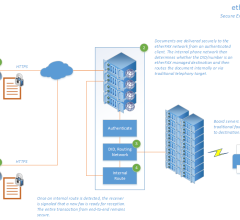
Image courtesy of Carestream Health
November 20, 2014 – The Centers for Medicare & Medicaid Services (CMS) released final rules outlining how Medicare will pay major health care providers and suppliers in 2015. Important provisions of the Affordable Care Act, that reward higher quality, patient-centered care at a lower cost are being implemented by these rules. The final rules include: Medicare payments to physicians and non-physician practitioners, hospital outpatient departments, ambulatory surgical centers, home health agencies and dialysis facilities that treat patients with end-stage renal disease.
The rules reflect a broader administration-wide strategy to find better ways to deliver care, pay providers and distribute information to patients by spending taxpayer dollars more wisely.
Empowering providers to deliver coordinated and integrated care, transition to new models of care and improve the doctor-patient relationship.
· Better coordination of care for beneficiaries with multiple chronic conditions. Often, seniors with multiple conditions see a number of specialists. In those cases, extra physician effort is required to coordinate a care regimen that prevents over-treatment or duplicative tests. Historically, Medicare has not paid for services that support care management, but are not delivered face-to-face, such as telephone check-ins with nurse care managers, in the clinical setting. Under this year’s rulemaking, the Medicare Physician Fee Schedule will include a new chronic care management fee beginning next year. This separate payment for chronic care management will support physician practices in their efforts to coordinate care for Medicare beneficiaries with multiple chronic conditions. This helps improve the way care is provided by supporting clinicians coordinating care for patients, including outside of regular office visits.
Aligning the way providers are paid to reward value rather than volume.
· Paying providers for quality, not quantity of care. In 2015 Medicare is continuing to phase in the Value-based Payment Modifier, which adjusts traditional Medicare payments to physicians and other eligible professionals based on the quality and cost of care they furnish to beneficiaries. Those adjustments translate into payment increases for providers who deliver higher quality care at a better value, while providers who underperform may be subject to a payment reduction.
· Providing incentives to hospital outpatient departments and facilities to deliver efficient, high-quality care. The Hospital Outpatient Prospective Payment System/Ambulatory Surgical Center (OPPS) rule includes provisions that promote greater packaging of payments for items and services rather than making separate payments for each individual service. One example of this is a new comprehensive Ambulatory Payment Classifications payment policy is being implemented in 2015 to make a single payment for all related hospital items and services provided to a patient receiving certain device-dependent procedures, such as insertion of a pacemaker, rather than separate payments for each supportive service, such as routine tests and diagnostic procedures.
Increasing the availability and accessibility of information on quality, utilization and costs for effective, informed decision-making.
· Better information for providers to understand the total scope, cost and quality of care that the Medicare beneficiaries they serve receive. To assist physician groups and physicians in improving quality of care for their Medicare beneficiaries, CMS recently made Quality and Resource Use Reports available, which include information about the scope, cost and quality of care that is delivered to the Medicare beneficiaries they serve, both inside and outside of their practices. These reports include information on where beneficiaries are hospitalized and whether they were readmitted. Solo practitioners and group practices can use the reports to implement action steps that can improve care coordination and reduce the provision of unnecessary services, improving the quality, effectiveness, and efficiency of care delivered to Medicare beneficiaries.
· Expand and add new measures to the Physician Compare website. The Physician Compare website allows consumers to search for reliable information about physicians and other health care professionals who provide Medicare services so they can make informed decisions about who delivers their care. CMS has finalized policies to expand the quality measures available on this website by making group practice and individual physician-level measures available for public reporting, including patient experience measures, and measures collected by Qualified Clinical Data Registries. By making all of these measures available for public reporting, CMS can work to include a diversity of quality measures on the website while including only those measures that are most beneficial to consumers and best aid decision making.
· New quality and performance measures for dialysis facilities. The End-Stage Renal Disease (ESRD) Prospective Payment System rule introduces new quality and performance measures for outpatient dialysis facilities. The rule incorporates in 2017 a standardized readmission ratio, which assesses the rate at which ESRD dialysis patients return to an acute care hospital within 30 days of discharge from an acute care hospital, supporting the Administration’s efforts to reduce unnecessary hospital readmissions in all settings.
For more information: www.cms.gov


 May 17, 2024
May 17, 2024 








